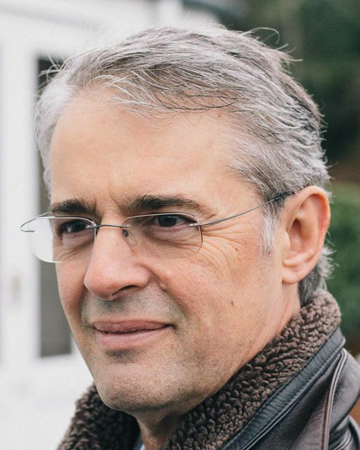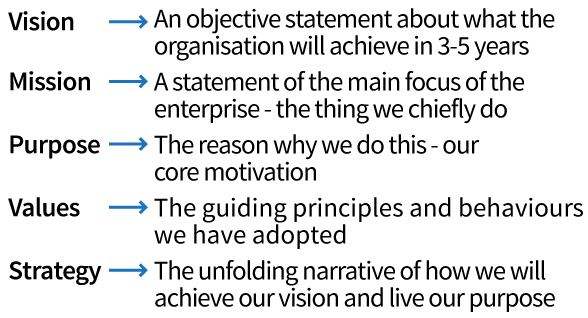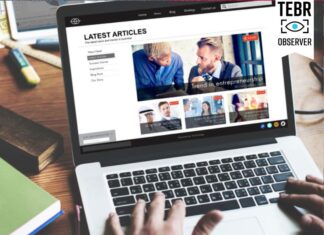You cannot build successful transformation in a hurry. The best transformation projects are slow-cooked, not microwaved. In this article, John Sutherland introduces the 4D’s of successful business transformation.
Let me introduce you to Derek. He is the CEO of a Pan-European business in the manufacturing sector and a bit of a star, in my book. He has the wonderful skill of asking the right question at the right time and listening to the possible answers until he discerns the best way forward. And that is exactly the approach he has taken to his business transformation project. When you stand back and look at the narrative of his business’s transformation over the last year and a half, a clear pattern emerges. We call it the 4 D’s of successful business transformation.
Sounds like common sense? Good. But it is far from common for this sequence to be followed thoroughly. Most business transformation projects falter because of the “engineer’s problem”; a built-in tendency to rush to solutions once the problem or goal has been identified. In fact recent books have vied for the title of fastest transformation possible, and that is where they go wrong. You cannot build successful transformation in a hurry, a fact that Derek was well aware of (having been around the loop several times before). The best transformation projects are slow-cooked, not microwaved. Think “cooked in its own juices” rather than “only hot in the centre” and you will have the general idea.
Step 1 – Direction
Every successful business transformation process starts with the same departure point: setting coherent direction and purpose. The words can get confusing and are used interchangeably, but the component parts of setting direction are these:
Visions seldom change but strategy is, by definition, iterative. The two often get confused but my car’s SatNav knows the difference. I put in the destination (vision) and my route (strategy) may be recalculated due to traffic information. Setting coherent direction means getting to grips with all these elements and establishing a credible initial strategy, to be refined en-route. And this takes time.
Once the senior team have wrestled the core issues to the ground the next necessary phase is engaging the wider leadership team. Their role is not to re-design the vision but to flesh out the strategy in the light of their operational experience. Rushing into a transformation project without focussing enough effort on engagement results in attempting to proceed with a dislocated organisation, with the senior team wondering why everyone else is being so slow to catch on and the wider organisation wondering when the Directors are going to wake up to the disconnect between their new shiny vision and the real world?
Derek set up a drum beat of monthly senior team strategic debates for 6 workshops. Each month the thinking got clearer and more grounded and, by the end, formed a coherent and cohesive whole. Derek invited me to contribute to the process, which meant we could not only focus on the current direction setting task but also refine the process by which they evolved their strategy, making it “fit for purpose” for the next cycle of growth. Successful business transformation requires building in strategic agility to respond to the every increasing pace of change in the business world.
Step 2 – Diligence
Once you know where you are going you can begin the task of examining the degree to which you have everything you need to get you there. And I do mean everything. Derek started with one clear advantage over a number of other organisations we have worked with. He led a business that was consistently a year ahead of plan and had solid cash-flow. First tick in the box. So we started the process of considering the rest of the diligence issues:
Safety performance. Was safety performance where it needed to be to allow for sustainable growth, in line with their vision? The short answer was no, and a thorough audit was carried out to identify what needed to change.
Structure. Did the current organisational structure look credible for providing a cohesive organisation as they continued to grow? Again the answer was no and some changes were required to ensure Derek could keep his finger on the pulse of the business as it evolved.
Values and behaviours. Values, at best, work in tandem with organisational structure to bring clarity to moment-by-moment decisions. Quite often values stagnate and need a refresh. In Derek’s organisation they were essentially all still relevant but needed to reflect a greater focus on responding to changes in the external market. Derek and his HR Director commissioned us to produce a set of behavioural values, which detailed what their values meant when translated into practical terms and how these could be expressed as competencies.
Leadership and management. Did they have the leadership and management skills required to deliver the vision? Few CEO’s appear willing to ask this question in detail and just commission an “off the shelf” leadership programme, in the vain hope it will provide a patch for the skills they need. Time and money spent on a proper review always pays dividends and ensures you only develop those with potential for the next phase of growth. It also specifies the exact gaps that need to be plugged through a mixture of internal development and external hires. Derek put his top 5% through the review process, which included himself and his team. The “magic 5%” always seems to be just the right number; not so many that costs become prohibitive but enough to really sense-check the strength of the organisation.
Processes. Processes are often missed in diligence reviews. Working in the same way and expecting different results is obviously wishful thinking. However, operational and teamwork processes can become part of “the way we do things around here” and can be difficult to objectively review internally. In Derek’s organisation there was a need to slim down the meeting culture and beef up strategic dialogue.
Step 3 – Development
Running an effective diligence process means that the required content of the development phase is already specified. One logically flows into the other, like following a recipe. The safety audit flowed seamlessly into a safety performance programme. Tying behavioural safety in with your required leadership and management development makes sense, so that there is a seamless flow from one to the other. In the end it is mostly behaviours that need to shift.
Derek developed a new structure, based on the principle of de-layering the organisation, to allow information to flow more effectively and for delegated authority to be sharper. He checked it over with me, which also meant we could include leadership behaviours that would support the new structure. The behavioural values and competencies gave it all a clear and structured framework.
The development work for the senior team was, of course, focussed on the skills they would need in leading the organisation towards its vision. Having them go through their programme first meant they led by example, demonstrating that no one was too senior to be developed. It also meant that the conceptual models that were effective for the senior team could be offered to the wider leadership group with the ringing endorsement of their line managers. And the work with the wider leadership group, in turn, clarified what needed to be in their management programme. The programme that emerged was based on that most important ingredient of “what works here”.
I do wish all firms would put the directors through internal development programmes first. It makes it all so much easier and facilitates the flow of learning. Sadly, most view development as something for those reporting into the senior team. A classic mistake and another reason why many transformation projects fail.
A healthy flux of corporate talent renewal is always a good idea and this was achieved before the development work started, following the diligence phase. New skills and experience was hired in and some, who were not going to grow and adapt with the organisation, left. This leant new energy to the development work as it challenged aspects of the current culture that needed a healthy shake-up.
As I write we are still in the development phase with Derek’s organisation and it is going to last a total of ten months, from directors to managers across the most senior 5%. Enough time to allow those going through first to support the learning of those going through next, and for those going through later to act as a prompt for those who went through earlier. Having an insight into how they need to change as individuals, teams and divisions is an excellent start but it takes sixty-six repetitions of a desired behaviour before a new neural pathway is established for individuals and several months before new ways of working as a team or division becomes reliable and efficient. People do not change overnight, you have to allow time for them to adjust. That model some consultant took you through years ago on the Transition Curve happens to be based on solid data. Transition is a process, not an event.
Step 4 – Delivery
Derek and I, plus his excellent HR Director, are actively engaged in co-designing the final step, focussed on delivery. The previous steps have, of course, been imbued with a focus on creating Return on Investment. We have yet to finalise exactly how it will work for them but it will have some, or all, of the following features:
• A direct line of sight between delivering the strategy, personal objectives, development focus and each new action.
• Learning on the job, rather than learning by theory.
• Tracking progress against plan and adjusting the strategy in the light of what actually works.
• Placing an equal focus on individual and team development. We want leaders who hunt as a pack rather than just a series of lone wolves on the prowl.
• Ensuring that evolving working relationships and teamwork processes are aligned with the needs of emerging business structure, in terms of flow of information and decision making.
• Using the 4 P’s to take 25% of time out of meetings and sharpen their focus (see my article in this journal for July-August 2015 pp 45-47).
• Placing leadership in a framework. Setting clear parameters within which leadership needs to operate so that there is both governance and empowerment.
• Dealing directly with any sign of cultural homeostasis, where the organisation unwittingly seeks to reproduce what it had done before in the plans for the new order.
The last point, on cultural homeostasis, needs an extra sentence or two. Unless your organisation is made up entirely of robots working unsupervised, it is the case that you have to deal with people and their collective behaviour. Groups of people naturally develop their own enduring social systems and they are hard to change. We should expect homeostasis (an energy that works to keep things the same) and plan for it. In Derek’s organisation we added in work on homeostasis into the second phase of their leadership programme, to arrive just at the point where they are going to need to address the issue. By the way, it is always easier to see stuck systems from outside, which is one place where experienced management consultants can add value.
Once the formal part of the programme is finished Derek knows there will be some finishing off work required, and has been talking to me about what form it should take. Some ends will need tidying up, some teams will need extra support, some key people will struggle to make it up the hill. You know the sort of thing. Planning for the tail-off phase makes excellent sense and ensures the transformation work is properly and thoroughly bedded in.
You will not be surprised to hear that Derek’s transformation project is going well and their performance has just been recognised by a National award. A pleasure to work with and a “master chef” of the thoroughly cooked and easy to digest transformation projects.
[/ms-protect-content]
About the Author
 John Sutherland is the Director of Strategic Resource, a firm that specialises on assessing, developing and supporting the work of senior teams. Strategic Resource works internationally and is based in the UK. www.strategic-resource.co.uk
John Sutherland is the Director of Strategic Resource, a firm that specialises on assessing, developing and supporting the work of senior teams. Strategic Resource works internationally and is based in the UK. www.strategic-resource.co.uk






























![“Does Everyone Hear Me OK?”: How to Lead Virtual Teams Effectively iStock-1438575049 (1) [Converted]](https://www.europeanbusinessreview.com/wp-content/uploads/2024/11/iStock-1438575049-1-Converted-100x70.jpg)




